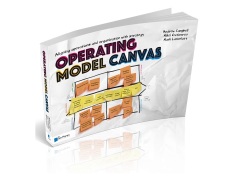At various stages in the last few years I have had a check list of trends (mainly tech trends) that managers should be considering when they are reviewing processes or operating models. Things like “automation” or “digitization” or “mobility” or “social media”. The basic idea is to encourage managers to think about whether they are exploiting these new technologies enough in their new process or operating model designs.
So I am always on the look out for an article that synthesizes down all these different trends into a manageable number to think about. In 2017, two articles got particular attention from me, one from BCG and one from McKinsey.
The BCG report “Twelve forces that will radically change the future of work” by Vikram Bhalla, Susanne Dyrchs and Rainer Strack has five trends that interest me (the other seven are about changes in the customer desires or the workforce). The five are:
– automation: nearly half of all jobs in the US can be automated
– big data and advanced analytics: 2.5 quintillian of data are generated every day
– access to information and ideas: 7.6 billion people will be using mobile devices
– simplicity in complexity: 74% of managers believe that complexity is hurting performance
– agility and inn0vation: 90% of managers say that agility is needed to execute strategy
The McKinsey article “The next generation operating model for the digital world” by Albert Bollard, Elixabete Larrea, Alex Singla and Rohit Sood only has five trends. The five are:
– Lean process design: streamline processes and eliminate waste
– Digitization: digitize both customer experience and day-to-day operations
– Business process outsourcing: drive the next generation of outsources and offshoring
– Advance analytics: provide intelligence to facilitate decisions
– Intelligent process automation: to replace human tasks
What should we take away from these two authoritative sources? First, neither includes the big fad of the last five months Artificial Intelligence (although it underpins two or three of the McKinsey list and two of the BCG list). Second, there are some notable similarities and differences. Both include automation and analytics. BCG has access to information, agility and simplicity. McKinsey has lean, digitization and outsourcing.
So here is my list – ALODSAMOSA
- Automate (including artificial intelligence)
- Lean
- Outsource
- Digitize (both the customer interface and operations)
- Socialize (take advantage of social media)
- Analyze (collect big data with sensors and analyze)
- Mobilize (enable people to work anywhere)
- Offshore
- Simplify (cut complexity)
- Agilify (reduce the time it takes to change)
The question to ask of any process or any operating model is “Are we exploiting the trends of ALODSAMOSA?” It is a bit of a mouthful, but quite catchy once you have said it a couple of times.
What additional or different items would you suggest? What about printed manufacturing? What about “environmentalize”? What about dignity at work? And then there are age old concepts such as “specialize” or “empower” or “align”.


Andrew – stimulating article, which prompted two lines of thinking for me:
a) trends are typically found by looking backwards – does the BCG research bring a forward looking view into their analysis?
b) thinking about the future – drew me to the book that I have just finished reading – “The age of the unthinkable” by Joshua Cooper Ramo , subtitled “Why the new world disorder constantly surprises us” – written nine years ago
The latter introduces a range of lines of thinking that influence how we think about the future / change and may be helpful to those involved in design more sustainable operating models
Thanks for the tip Peter. I think, when considering trends, we are all looking for trends that will be important in the future rather than the past. So yes , both BCG and McKinsey are thinking future. But you are right, most trends are only observable once there is some history. Guessing what future trends will be without any data from the past is not easy and potentially dangerous. I recall the famous HBR article on forecasting (by James Brian Quinn I think) which argued that only a very few things are forecastable … and the example given of something that was forecastable was supersonic flight!